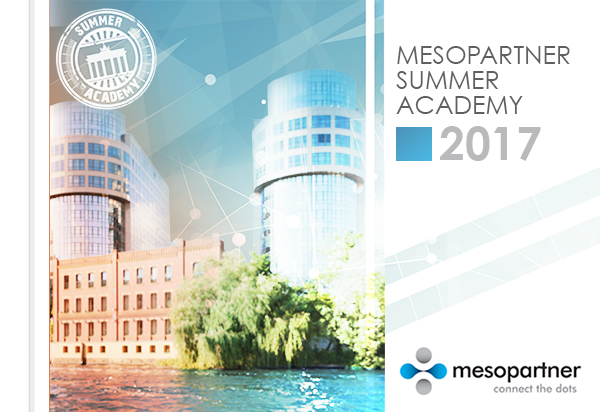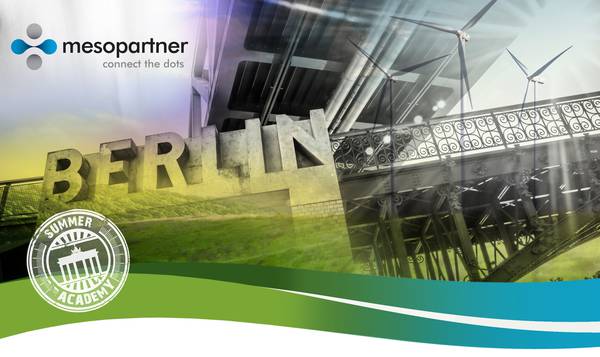I have now gone through the bulk of the Warm Data Lab host training (only two sessions left) – yet I know that my journey into Warm Data and actually hosting Warm Data Labs or People Need People online sessions is only just beginning. In this post I want to go a bit deeper into Warm Data and what criteria Warm Data, or rather the process to generate Warm Data, should adhere to. I also want to show that Warm Data is not just about making us get a warm and fuzzy feeling; it is as much about rigour and scientific enquiry. It is based on the theoretical foundations built up by three generations of Batesons: first William, then Gregory and now Nora – as well as their collaborators at various points along the way. I’m still exploring how this particular body of knowledge is connected to the ones I have been diving in before like complex adaptive systems, anthro-complexity, complex reflective processes or systems dynamics. My suspicion is that while the language is different many of the ideas and concepts overlap, in particular between anthro-complexity, complex reflective processes and Warm Data. But I’m skipping ahead.
Besides my notes from the Warm Data Lab host training, I also draw from an article on Warm Data Nora wrote back in 2017.
Let’s start with the definition of Warm Data:
Warm Data is transcontextual information about the interrelationships that integrate a complex system.
The notion of transcontextuality is central to Warm Data, as I already alluded to in my first article. What is also important is that Warm Data is about the relationships, the in between. It is not about describing the parts or elements of a system, but the relationships, interrelations and interdependencies between both the parts but also the various contexts. Learning happens at the interfaces between the contexts, where inconsistencies and paradoxes become visible. In traditional scientific enquiry, these interfaces are often not looked at, they are blind spots created by the boundaries of the various disciplines. While transdisciplinary approaches attempt to assess the relationships and interdependencies, Warm Data also challenges notions of objectivity, measurability and replicability in relation to the enquiry of complex living systems.
Warm Data can be described by using the following seven criteria, together with some examples from my own experience:
- Observing the observer: As we know from scientific disciplines like biology and physics, the observer cannot be located outside a system of enquiry but has an effect on what is being observed. Importantly, observing changes what occurs, our perceptions of what occurs also depends on who we are as observer (see below ‘cultural responsibility’). Hence, we need to know who is observing and what the observer can perceive and what not (what are our blind spots?). As we all have these blindspots that are either hardwired into our human brains or culturally and socially learned, generating Warm Data always happens in a team of diverse people. Or as Nora puts it in the article referenced above: “The observer matters, and teams of observers matter. Since data are always derived through the particular lens of the researchers, descriptions of their filters of perception are vital information and must not be sterilized out of findings.” In my own work in international development, this plays a very important role when attempting to observe the effect or effectiveness of a project, either through monitoring or evaluation. Interviews and surveys are a common data collection methodology. When I go out to interview people, I bring my own bias with me, so whatever I perceive will already be filtered. Did I like the project and the people working in the project? Or do I want to find that the project is not doing so well? But my presence also alters the behaviour of the respondents, as they are likely to respond to my questions with what they think I want to hear. They might also have their own agenda, for example hoping that project support would continue if they say that the effects were not yet really big. Of course experienced evaluators know about this effect, yet in practice there is very little done to mitigate it.
- Multiple description: Building on the above, we need to capture multiple diverse descriptions of a situation. But in Warm Data, it is not just about collecting a large number of descriptions from multiple perspectives, but also about asking what the relationships between these descriptions are. What are the differences in them that make a difference? Neither is it about having just diverse descriptions that all have the same form. We also want to have multiple tonalities, textures or other forms of descriptions (scholarly texts, essays, lectures, stories, poems, music, videos, photos, etc.). Nora puts it this way: “Multiple description both blurs the distinctions between contexts, and describes them through difference, comparison and relational perception. While it might appear that this process would lead to an untenable and infinite collection of perspectives, the Batesonian notion of information as “difference that makes a difference” is way [sic!] to study the relation between perspectives, through contrasting qualitative characteristics. The information is not located but diffused into the contextual contacts and boundaries.” In my experience, we often try to combine observations by the project teams with reports of the project partners, relevant news articles, interviews and focus group discussions as well as narratives collected from the partners. Sometimes, photos are also used to document changes. We have not gone as far as also taking into account other textures like poems or music – although I can remember some instances where project team members or partners wrote songs about what they experienced in the project. One of our Mesopartner associates is also a poet, but as far as I remember, he prefers to write poems about wine, rather than about logframes …
- Fluid patterning: The need for looking at patterns instead of independent events in order to better understand complex living systems has become well accepted. The Systems Iceberg shows patterns of behaviour as the first layer underneath the surface of the observable. In Warm Data, however, the emphasis it is not about seeing the patterns in a static way, but to also understand how the patterns change. And again, it is also about seeing relationships between contexts through “patterns that connect” (another Batesonian notion). How patterns of behaviour change over time is certainly an important aspect of monitoring systemic changes. For example, in one project that works on improving employment in Moldova, we use patterns of how various actors organise, exchange information and learn together to see whether there is a change towards more collaboration and common problem solving.
- Paradox, inconsistency, and time: complex living systems are constantly changing, yet there also are temporary stabilities that are often perceived as structures (see my post about ‘A dance between structures and events‘). Different aspects of systems are changing with different speeds, which inevitably will lead to inconsistencies and paradoxes. The question we need to ask is what we can learn from these inconsistencies and how we can hold these paradoxes over time, as they are important opportunities to learn. In Nora’s words: “Scientific research premised upon the complexity of a system in relation to its environment will produce paradox and inconsistency, by necessity. In order to keep the complexity intact, results should feature these dilemmas without resolving them. In fact these instabilities are sources of information about the relationships that are highly generative. Relationships over time change, and aggregated relationship such as a forest or society must produce responses to responses that are disruptive. The disruptions are rich with Warm Data.” We are currently, in the time of the COVID-19 pandemic, experiencing a time with massive inconsistencies between what we know, what legislation is being proposed and enacted, and how we act as a result of it. There are inconsistencies between countries and in countries that have federal structures like Switzerland and Germany we also see inconsistencies between the Länder/Cantons. This is a massive opportunity to learn about the relationships between research, knowledge, policy, politics and behaviour. All of this is happening in the paradox that we need to stop (or control) the spread of the virus while at the same time keep our lives, our children’s education and our economy going.
- Holism and reductionism: in my last blog post I tried to write about the difference between a transcontextual perspective and a holistic perspective on the world. While the latter divides systems into parts and wholes and sees the system as created out of the interplay of the parts, a perspective informed by Warm Data sees the parts and the whole as a paradox rather than as resolvable and fully separable. I’m still figuring this out so in my reading, this criteria of Warm Data refers to the need for understanding the boundaries of reductionist thinking and its usefulness as compared to holistic or I’d say rather transcontextual thinking. Reductionist methods are useful but the use is rather specific in taking a piece out of its context and freeze it in time, then study it and – maybe – putting it back into the context. Warm Data studies relationships and can therefore only happen in the context(s) and in time. Or to again use Nora’s words: “Information derived by zooming out to study context is as important as the information derived by zooming in on detail. These two forms of information are not alike. One is relational and overlapping, the other is isolated and (sometimes) linear. Both are needed in relation even when they produce contradictions. Smaller and larger contexts are tangled up mutually calibrating interactions. They are not concentric nor are they separable; rather they are steeped in interdependency.” This reminds me of the discussions on using Randomised Controlled Trials in evaluating development intervention. RCTs are deeply rooted in a reductionist stance, attempting to isolate a single variable and see how other variables change if it is present or not – for example how the attainment of pupils is changing if they are fed at school or not. Here, the context is ignored or even statistically removed. While RCTs can have their justified uses, a Warm Data approach would always emphasis the need to also understand the multiple contexts that come together in a school, to use the same example. What is the economic situation of the families of the children and the teachers? What is the nutritional situation? What is the ecological situation in the place the school is located? What social or socioeconomic are at play? What is the role of politics? A multitude of different factors determines the attainment of the children. Another quote by Nora I love that describes the interplay between reductionism and holism beautifully is this one: “To study the tango, a student must first know what the tango dance and music are. Then, when the steps are dissected into parts, they are still considered within the cohesion of the whole dance. Contextual knowledge gives a scaffolding to build detail into, but decontextualized details lack life.” (it is from Nora’s article Preparing for a Confusing Future Complexity, Warm Data and Education)
- Cultural responsibility: Every culture and every single one of us has blind spots, so we need to take responsibility for them. By observing the observer and using multiple descriptions, we can uncover blind spots and mend them by working in a team – ideally a multi-cultural team that can also detect cultural blind spots. Even what we understand as knowledge in the Western society is limited by a Western academic frame. We need to hold the humility that there are other ways of knowing in the world that are not less rigorous or less relevant. Nora puts it this way: “Science and culture are deeply entwined. Development of inquiry that is simultaneously inclusive of multiple generations, cultures, and sectors is useful to keep observers’ frames relevant. Information is only as perceivable as the sensorial limits of the observer. A variety of perceptions lessens blind spots.” Cultural responsibility plays a huge role in my work in international development, where I predominantly work with people from different cultures. Listening to them and trying to see their realities is crucial, even though not always easy. Many development workers bring, consciously or unconsciously, an attitude of ‘we know better’ and ‘let us fix your system.’ But the systems in developing countries are not broken, they work perfectly well given the circumstances. We need to build from what is already there and as external agents it is not easy for us to see that. It does require a good portion of humility.
- Aesthetic, mood, rhythm: The tone matters to any enquiry. The mood or rhythm of a context shows the limits of the relationships or of the communications. The tone in a board room is very different from the tone in a bowling club. This difference is important to recognise. Nora: “In any inquiry of life, the aesthetic matters — perhaps above all else. This vital condition of any interrelational context is often ignored in favor of misplaced rationality. Given that complex systems are interrelational, the nature of the relationships needs to be noticed. The aesthetic is the conduit through which relation occurs. While the aesthetic need not be valuated, it must be noticed to better assess relational information. Keeping in mind that the opposite of aesthetic is anesthetic, it is clear that increasing sensitivity is preferable to numbness as it increases receivable information.” As a decent facilitator, you feel the mood of the people in a room and, for example, I often notice a difference if the boss of a team is in the room of not. Or just in general, you can notice how a team works together and whether they harmonise or not.
While I found some examples for each of the criteria, bringing them all together is still challenging, but I can see how they can come together to produce much ‘warmer’ results, for example in talking about the effects of projects. I have come across many of these criteria before in other contexts. For example, Theory U talks about bending the lens back on the observer, which is in line with the first criterion of Warm data. From anthro-complexity, we know that as individuals are not able to see the whole system, so we need to look for multiple perspectives – and look at the system from multiple perspectives –, which corresponds with the second criterion – even though the idea of also looking at different tonalities and textures is a new one for me, but makes a lot of sense. The school of thought on complex reflective processes also talks a lot about paradox in complexity. Seeing these criteria in this shape brought together in the theory of Warm Data is very encouraging and for if different bodies of knowledge share the same bases that is a good sign and makes them more credible. Also the way Nora describes them in very human terms is, no pun intended, warming, and makes them accessible in a new way on a new level.
This post is quite dense and it took me quite some time to write this up, so I’m stopping here. More to come on my adventure with Warm Data.
Featured Photo by Viktor Forgacs on Unsplash






 Also this year I will be training at the Mesopartner Summer Academy, which takes place in Berlin from July 7 to 11.
Also this year I will be training at the Mesopartner Summer Academy, which takes place in Berlin from July 7 to 11.